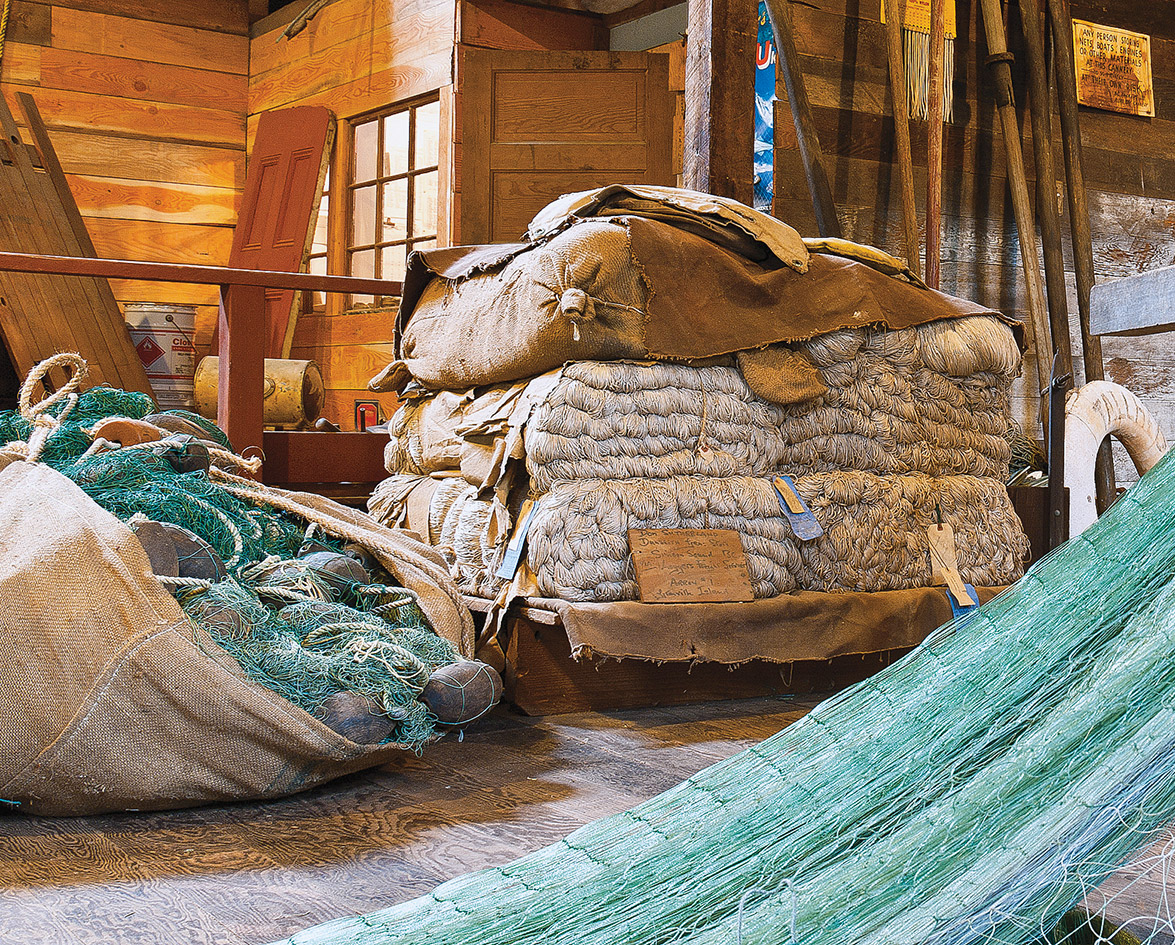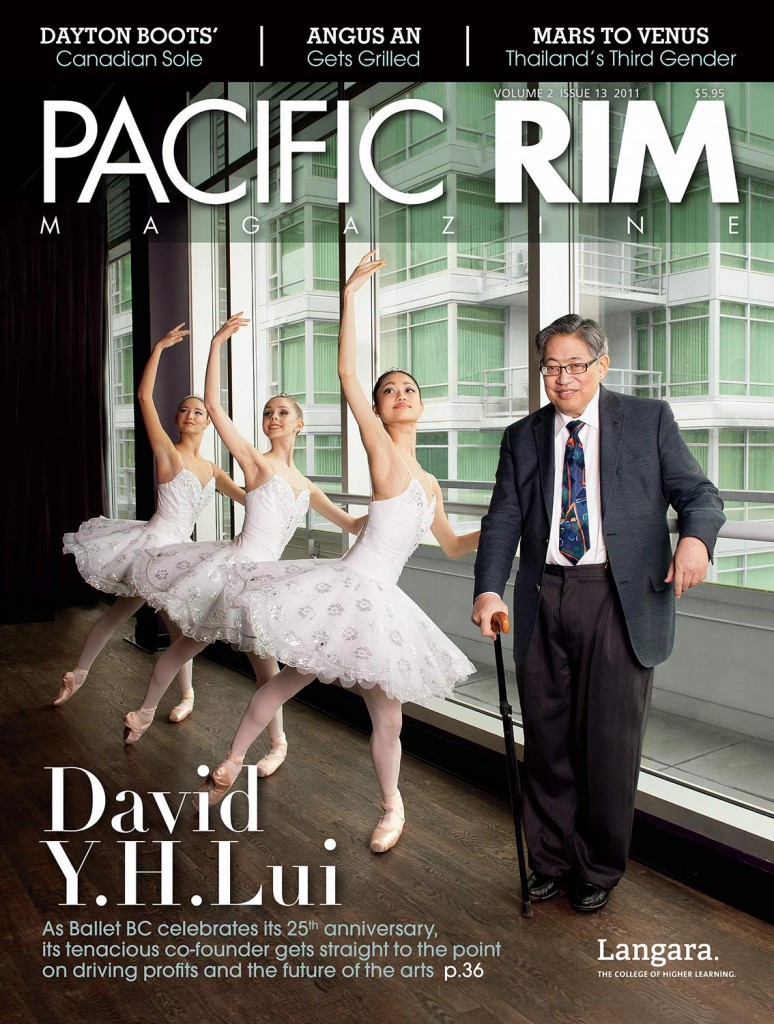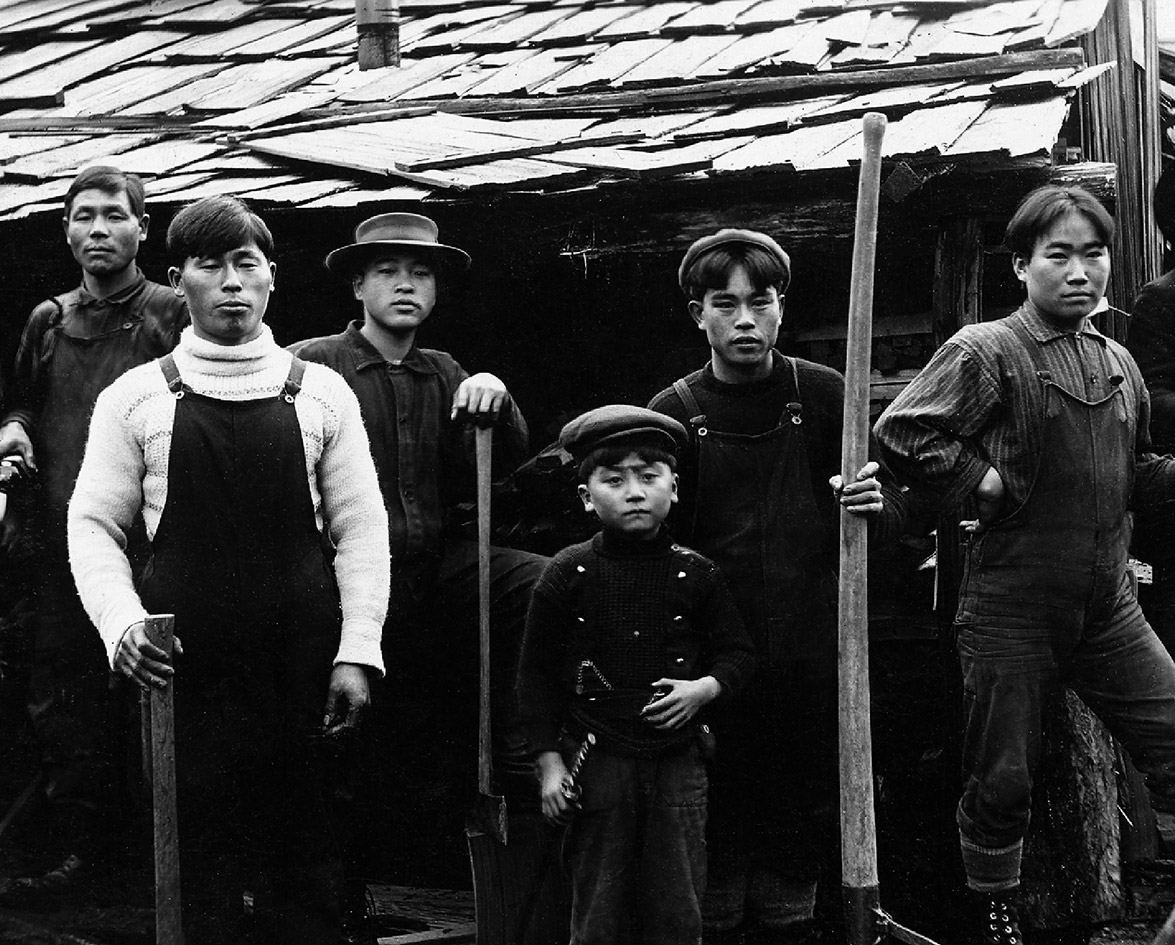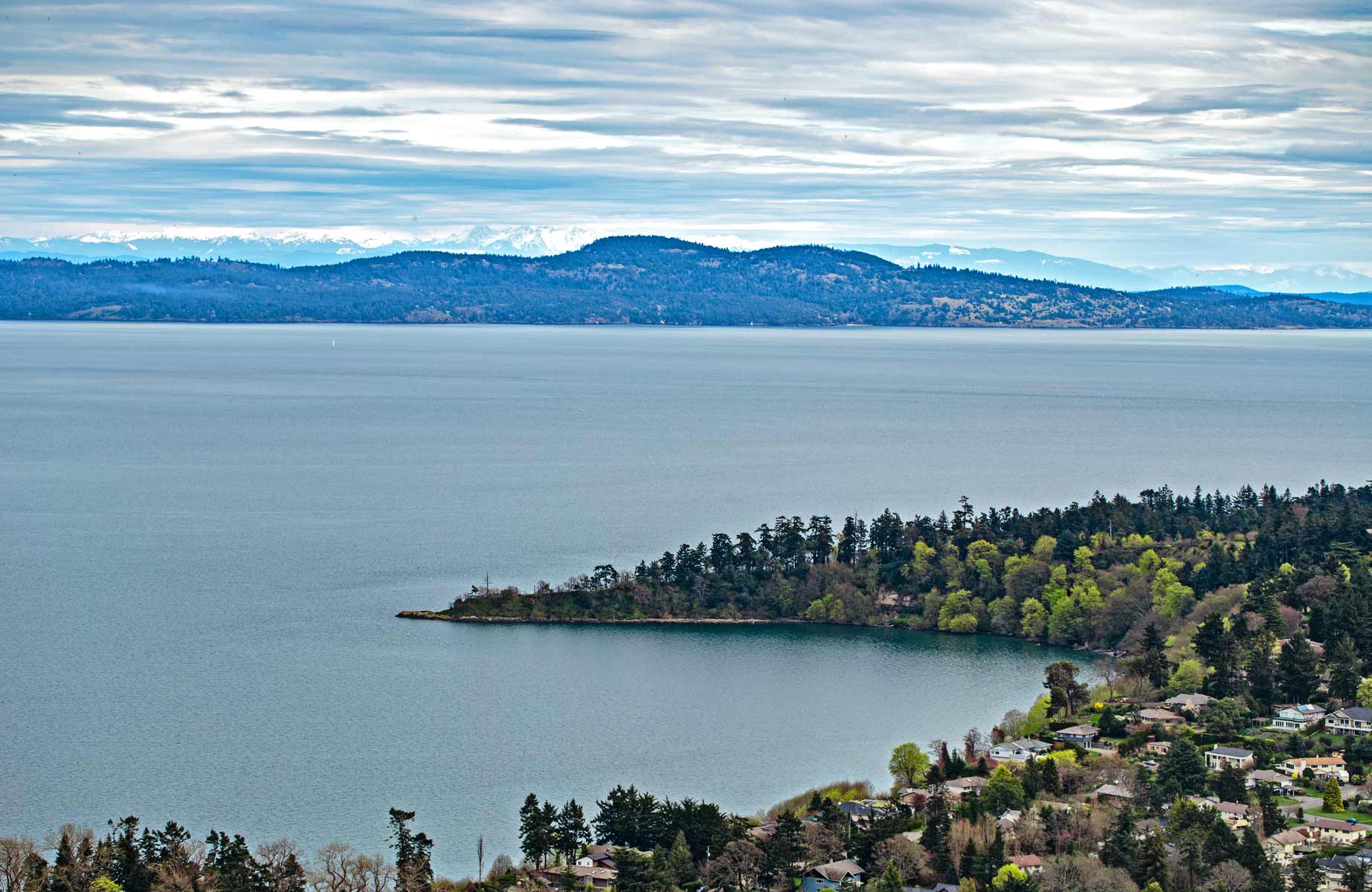On the second floor of a high-ceilinged loft space, rain drumming overhead, Robert Critchley steps across the ancient floorboards of what remains of a fish cannery built in the early 1900s in Alert Bay, B.C. His footsteps echo on the thick wooden planks below, each board etched with the wear of over one hundred years of dirt and foot traffic. It’s cold outside, as is often the case in damp coastal towns. Mist is wrapping itself around the building, forcing its way through the cracks in the walls. In 2003, the cannery was slated to be demolished, and Critchley, who has spent his lifetime collecting cannery and fisheries artifacts, went about salvaging most of the building, piece by piece. First the windows, then the walls, floors, and even the dock were taken down. Each section was then carefully transported from Alert Bay to his property on Vancouver Island. And when all of the old wooden bones were in one place again, Critchley and his wife Nancy painstakingly resurrected the structure next to their home.
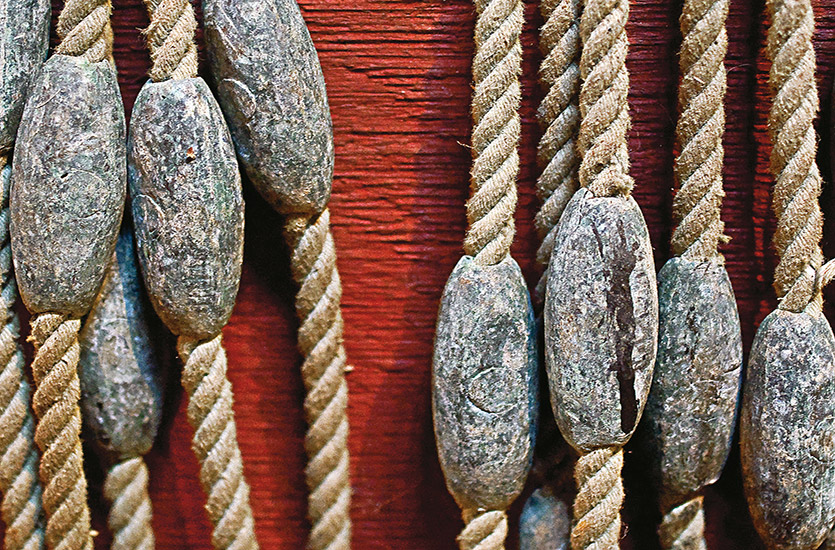
Visiting The Cannery
Critchley has invited me to his cannery to see his extensive collection of fisheries artifacts, as well as to find out more about B.C.’s coastal history. But I also have a personal thread connecting me to the canning and fishing industries of the past; I’ve heard that his collection includes letters written by my grandfather, Sam Matsumoto, who was well-known in the local fishing industry for pioneering aluminum shipbuilding on the coast of B.C. Years ago, Critchley owned a Matsumoto ship himself—one of over two dozen different vessels he estimates he’s owned and sold over the years. Critchley is certain he has some of Sam’s correspondence included in his collection, and has promised to show me the documents. But before Critchley reveals my grandfather’s letters, he continues to guide me through the transplanted cannery building.
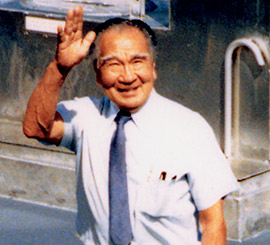
In what was once the office of the cannery are desks filled with original documents—an impressive record of the daily goings-on of the industry: paycheques, punch cards, lists of salmon caught and quotas met, accounts of orders filled. Nancy says Robert “hung by his toes” to save some of the items, as they were often sinking into the ocean in neglected buildings. The items aren’t limited to small objects, either. As I tour the cannery, Robert and Nancy show me a number of massively heavy canning machines that were used to clean, cut, and can the fish. Critchley then points to the names of workers that are scratched and painted onto the inside walls of the building. As he rebuilt the structure, he took care to ensure that the names were positioned so that they remained legible. Critchley’s attention to detail is testament to his reverent fascination with these remnants. Sensing the decline in the canning industry, and knowing that there are few other people who see the value in these objects, he has taken it upon himself to be the keeper of this disappearing part of B.C.’s history.
Canneries Have Decreased Over The Years
Defying the trend of declining fish stocks, the sockeye run of the fall of 2010 set records for the highest number of salmon returning to the Fraser River in nearly a hundred years. But there were so many fish caught that the few processing plants that remain couldn’t handle the surplus. According to some news reports, many fish spoiled as a result. Years ago, a lack of canneries would have been unthinkable, says Don Millerd, owner of Brown’s Bay Packing Company based near Campbell River. During a phone interview on a business trip to Vancouver Island, Millerd says that his family has owned and operated canneries for generations, the first of which, the Great Northern Cannery, was built in 1891 in the area that is now West Vancouver. At that time, Millerd says, there were dozens of cannery communities up and down the coast of B.C. In total, these company towns employed thousands of workers, many of whom were immigrants who would permanently shape the cultural and racial landscape of the province. He says technologies like refrigeration now allow consumers to rely less on preserved foods, reducing the need for canned products. There’s no question in his mind that the days when the salmon were abundant, and the canning and fishing communities thrived, are gone forever. His hope is that someday Critchley’s artifacts will be recognized for what they are: a significant contribution to the preservation of the history of the province.
Salmon Spawning Has Been On The Decline
With the exception of the 2010 sockeye run, the numbers of salmon that return to the Fraser River to spawn have been on the decline since the late 1980s. According to Jude Isabella, a science writer based in Victoria who studies the anthropology of salmon, the decline in the numbers of salmon should not be entirely attributed to over-fishing. Logging, for example, might also have contributed to the decline. In an email interview she explains that when forests were logged, countless small streams were destroyed in the process, which ruined potential spawning grounds. Isabella estimates that the people of North America have been relying on salmon and other fish for food and trade for over 10,000 years. Early European settlers and new technologies brought changes to the salmon economy. “They are an extremely resilient fish…Habitat degradation, overfishing, industrial fish hatcheries, salmon farms—we’ve really done our best to make life difficult for them,” writes Isabella. “And yet the salmon keep coming back, maybe in smaller numbers, but they’re there. So just imagine how their numbers would increase if we fixed their habitat and then left them alone.” If the salmon returned in great numbers, that would be good news indeed for the canning and processing industries.
Is The Future Optimistic?
When it comes to the future of canning, however, Robert Critchley isn’t very optimistic. He feels a duty to preserve as much as he can because the industry will never be as large as it once was. Friends who know of his interest keep their ears open and inform him if they hear news of a closing cannery. When Critchley hears that a cannery is closing down, he makes an effort to salvage anything he can. But sometimes he arrives at a cannery too late—anything that remains inside is being scooped up with shovels and discarded, which breaks his heart. When asked what she thinks of the collection, wife Nancy smiles and shrugs. One person can only do so much, and she isn’t sure why her husband feels that he’s the man responsible for saving everything. But she says he’s inseparable from his passion. “He’s always had the interest. I don’t really know any different. It’s who Robert is.”
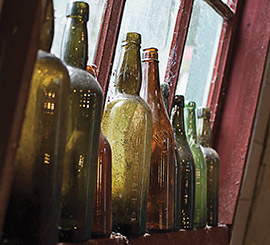
Critchley, 44, now displays most of his collection inside the old cannery, which has turned into a shrine to the golden age of B.C.’s fishing and canning industries. The rest of the collection—which is kept in his house—grew so much that it required a larger space. As such, the Critchleys recently bought and moved into an adjacent house, and are using an outbuilding on the property to display more delicate artifacts. Back at the kitchen table at his home in Sayward, B.C., Robert Critchley sits with his father Jim, and wife Nancy, who’s busy wrangling their two dogs. As a child growing up in a coastal fishing village, Robert admired the exotic faces and intricately written language of the Chinese and Japanese immigrants. “He used to pretend he was Japanese,” recalls his father. Young Robert loved to find colourful old medicine bottles, and for a time collected stamps, “which I wish he’d kept on doing,” Jim smiles. “Nice and light,” adds his son. When he was eight years old, Critchley’s lifelong passion for cannery artifacts was sparked when his own grandfather gave him some colourful fish-can labels. Since that time, the collection has grown to include anything and everything to do with B.C.’s canning and fishing industries: dozens of commercial fishing nets, netting needles used to mend fish nets, weights, floats, knives, empty cans, crates, bottles, and labels. The perfectly preserved labels are works of art in themselves—most of them a bright sockeye red, some ornately embossed. One can see why a young boy would have found them appealing.
Inside the Critchleys’ immaculately-kept home we look at binders filled with correspondence that Critchley has rescued from canneries that have closed down. He flips through pages of faded and yellowed paperwork. Many are letters handwritten with beautiful penmanship. Critchley’s hands, roughened by years of work logging and fishing, turn the pages quickly. Nancy says with amazement that her husband can recall most of the names that he’s read on those pages. “I’m trying to find the ones with the Matsumoto [documents],” he says to me. He pulls out another binder, turns another page in a plastic sleeve, and there it is: a letter written by my grandfather, Sam. Critchley reads off the page as I look at my grandfather’s signature. It’s not a noteworthy document by any means, just a negotiation between two businessmen over the cost of building a ship. Sam could never have imagined that a letter like this would become part of a larger story. But Critchley has an eye for beauty in the most unlikely of places, and sees the importance of saving something like this that would seem insignificant to most.
While Critchley’s hobby seems like an unusual one, there are a few other collectors with whom he trades. “It goes beyond collecting,” he says, as one of the best things about discovering and trading artifacts is meeting other people who share his interest. He hopes that someday he’ll be able to share his passion with more people by turning his collection into a fishing museum. He talks about completing the cannery dock, and fixing up a boat to put beside it. He even envisions building small houses nearby to replicate a cannery town. “I’m definitely a dreamer,” he says.
His is an unusual dream, but one that allows others to understand the path that the fishing industry has taken over the decades. Critchley’s collection is a record of the decline of our ocean’s fish; a natural resource that had existed in abundance for thousands—perhaps millions—of years. It is also a story of immigration, a story which continues in immigrant workers’ descendants, who are now well-rooted in our province’s diverse population. Every object represents our shared history; each piece of paper, each rusted machine, and each netting needle that Critchley saves mends a fraying thread that ties us to B.C.’s past, to each other, and to the sea.





